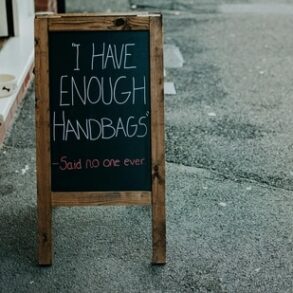
The world of luxury collectibles is experiencing a renaissance, not just as symbols of status and sophistication but as lucrative alternative investments.
Luxury collectibles like watches and handbags are increasingly being recognised as lucrative investment opportunities.
Items such as vintage watches, fine wines, rare cars, and high-end handbags have the potential to outperform traditional markets, drawing attention from investors seeking alternative assets. The allure of these investments lies in their ability to deliver both emotional satisfaction and financial returns.
A New Era for Luxury Collectibles
Luxury collectibles have become a prominent part of alternative investments, but with growth comes fluctuation.
Liam Bailey, global head of research at Knight Frank, emphasises the importance of strategic patience in navigating this dynamic market.
“Collectors might want to monitor market corrections, particularly in the upper end of the market where rare and highly sought-after bags like the Himalaya Birkin are traded. Prices for these bags can fluctuate significantly, as seen in the example of the white Niloticus Himalaya Birkin, which experienced a considerable price drop from its peak 18 months ago. When prices become more favourable, it presents an opportunity for collectors to acquire these pieces,” he says.
Access the most comprehensive Company Profiles
on the market, powered by GlobalData. Save hours of research. Gain competitive edge.

Company Profile – free
sample
Thank you!
Your download email will arrive shortly
We are confident about the
unique
quality of our Company Profiles. However, we want you to make the most
beneficial
decision for your business, so we offer a free sample that you can download by
submitting the below form
By GlobalData
Economic factors also play a crucial role in shaping opportunities within the market. Bailey points out: “Collectors should consider how currency fluctuations can create opportunities. The relative strength of the US dollar against other currencies in recent years has made investing in luxury real estate in the UK attractive for US-based investors. Similar dynamics may apply to the handbag market, where currency advantages could make certain bags more appealing to international collectors.”
In periods of market volatility, luxury assets can serve as a hedge against inflation. He elaborates: “Tangible assets are increasingly considered ‘real assets’ that act as a hedge against inflation. Interest in ‘investments of passion’ tends to increase during periods of economic volatility, such as the aftermath of the 2008 financial crisis, further supporting the notion that vintage watches might be perceived as a safe haven for capital during turbulent times.”
In addition to this, the luxury collectibles market, including watches, handbags, and other rare items, has seen profound changes over the past decade.
Dominic Khoo, a seasoned industry expert and founder of The Watch Fund, explains the major shifts: “Over the last decade, the luxury watch market has undergone a profound transformation, shifting from traditional venues to online platforms, to now almost relying completely on the internet. One of the biggest changes would be the use of social media as a primary marketing tool for watches, as well as celebrity endorsements and influencer collaborations in place of traditional print and television advertising.”
This digital pivot is reshaping how collectors and investors approach luxury goods, opening up a more accessible market to a broader audience. As Khoo notes: “Some online platforms have also evolved into marketplaces and virtual storefronts. We’ve even seen fractional ownership of watches come up.”
This shift to online platforms has made luxury collectibles more accessible to a global audience, particularly the younger generation that has grown up in a digital-first world.
Eran Peer, the co-founder and CEO of Konvi, a platform offering fractional ownership of luxury collectibles like rare handbags and watches, echoes Khoo’s sentiments about the growing importance of digital access: “We’re witnessing an influx of interest in the collectables market, with more people across a variety of demographics turning to luxury assets as investment pieces. Technology is one of the key enablers that is opening up the luxury collectables market, making it more accessible to a broader range of people.
“The key to assessing which asset classes are performing best lies in analysing their scarcity and demand. The rarer the item, and the higher the demand for them, the better they perform. Recently, we’ve noticed collectable handbags, luxury watches and natural history assets, such as fossils, performing particularly well as they come more into the public eye as investment options.”

This deeper connection between consumers and their investments is a driving factor behind the appeal of these products, particularly for younger, tech-savvy investors.
Peer’s platform is a prime example of how digital innovation is making high-end items more accessible.
“Our implementation of fractional investing technology into the luxury assets space has broadened access to the market. In doing so, we’re enabling a wider variety of people to invest in luxury assets. Traditionally, only ultra-rich investors with the right contacts, expertise and advisers could hope for success sin the luxury investing space. However, by enabling people to buy fractional ownership, we’re lowering the high market entry cost of the luxury collectables space. This empowers Gen Z, millennials, and people from a broad array of different backgrounds with access to asset classes from which they were previously cut off. In effect, we’re democratising the luxury assets space,” he says.
The model is revolutionising how people think about luxury items as a part of their investment portfolio.
The Evolving Definition of Value
While accessibility is expanding, the criteria for what makes a valuable luxury collectible remain unchanged.
For watches, Khoo stresses that curiosity and demand are key indicators for an investment-worthy piece: “Looking ahead, investors should focus on models and brands that haven’t experienced ‘hype’. Historically, pieces that go through hype cycles rarely ever recover, as the attention moves on to a new model or brand – but rarely returns to the same piece.”
Bailey adds context to this trend by underscoring the impact of scarcity and heritage: “Applying the principle of scarcity to vintage watches, it’s logical that their limited supply, coupled with the fact that many iconic models are no longer in production, makes them highly sought after by collectors. This scarcity drives up prices, especially for well-preserved examples.”
In contrast, the appeal of independent watchmakers, such as Philippe Dufour and Roger Smith, demonstrates a shift towards niche luxury. “As people become wealthier, their preferences evolve beyond mass-produced luxury items to seek more unique and exclusive pieces,” Bailey explains. “There is a desire for items that reflect authenticity, craftsmanship, heritage, and skill—qualities embodied by the work of independent watchmakers.”
Collectively, all three experts point to the importance of understanding the intrinsic value of a luxury collectible, beyond just following trends.
Khoo elaborates: “Try to look at pieces that are actually rare, not just “rare” because the salesperson tells you so. You might end up with pieces you perhaps have never heard of, but the research involved will make you a more informed buyer. If you’re buying brands and pieces that everyone knows, you’re likely already too late.”
This notion of true scarcity applies to handbags as well.
Peer says: “The appeal of the Monopoly Birkin comes from the combination of its value as an investment and its cultural relevance. From an investment perspective, Birkin bags hold up well due to their high demand and popularity. In many circles, these bags are already widely viewed as investment vehicles, as they tend to double in value roughly every five years. At the same time, the Monopoly bag has cultural value. Having been designed by Alec Monopoly, an artist who has made a name for himself by designing bags for the likes of Khloe Kardashian, the Monopoly Birkin boasts another layer of value – relevance.”
This emphasis on both visible and intangible aspects such as provenance and design, distinguishes valuable collectibles from fleeting trends.
Blue Dials, Integrated Steel, and Handbags with a Story
In recent years, specific watch styles and materials have garnered significant attention. “Blue dials, green dials, fume dials, sapphire cases, and integrated steel sports watches have been making a lot of headlines in the media,” Khoo notes.
“However, there is a big difference between the type of buyers that buy ‘headline pieces’ and collectors that have been buying dozens of pieces for the last few decades.”
The secondary market for handbags often mirrors trends in retail, making timing and strategy essential. While these pieces are grabbing the spotlight, Khoo cautions against investing in something simply because it’s trending.
Bailey says: “Much like real estate, the market for handbags is cyclical, and collectors can benefit from being patient. Collectors should avoid impulsive purchases and instead wait for the right opportunity to acquire a desired bag at a favourable price.”
Economic pressures, such as the cost-of-living crisis, also influence buyer preferences.
“In times of economic stress, people often seek out familiar and dependable options,” Bailey explains.
“This trend extends to luxury purchases, with buyers gravitating towards iconic pieces known for quality and longevity. The Birkin, particularly in durable Togo leather, embodies these characteristics, potentially boosting its desirability during a cost-of-living crisis.”
Peer adds a similar cautionary note for luxury goods: “One of the most surprising aspects is the resilience of luxury goods as an asset class, even amidst global economic uncertainty. Unlike traditional markets, which can experience rapid volatility, luxury investments such as brand-new and ultra-rare watches and handbags have shown consistent demand, largely driven by their scarcity and cultural appeal.”

The Role of Younger Generations in Luxury Investments
An increasingly important demographic in the luxury market is the younger generation.
Khoo, Peer and Bailey agree that Gen Z and Millennials are bringing fresh perspectives to the collectibles market. The growing influence of younger collectors is a defining trend across the luxury landscape.
Bailey notes that this demographic is comfortable with digital engagement, evidenced by the rise of online auctions and the NFT boom.
He remarks: “Younger generations, comfortable with online platforms, are driving a shift towards digital engagement in collecting, as seen in the rise of online auctions and the NFT boom. 75% of NFT buyers in 2021 were new collectors, with an average age of 42, and many from Asia.
“Younger generations place greater emphasis on sustainability and ethical considerations, influencing demand for certain luxury assets. Although not directly linked to specific price shifts in the sources, this suggests that future demand for luxury collectibles might be shaped by these values. Transparency in sourcing, production practices, and environmental impact could become increasingly important considerations for younger collectors.
“Beyond financial returns, younger collectors seek experiences and personal connections with their investments. This aligns with the broader trend of ‘emotional luxury’ and the desire for authentic, local, and tailor-made experiences. This shift suggests that younger collectors might prioritise passion investments that offer a unique story, craftsmanship, or cultural significance, aligning with their personal values and interests.”
Khoo observes: “I don’t believe there is much difference between Gen Z and Gen X in this regard. I think each generation realises that after a while, there are not many things that people can spend money on, outside of traditional investment methods besides watches. Gen Z is likely to have gained more knowledge – rightly or wrongly – through social media, whereas Gen X will have acquired similar insights through conversations, word of mouth and dinner parties, etc.”
For Peer, this generation’s approach is all about diversification: “Luxury assets appeal to Gen Z and Millennials because they offer cultural and emotional value beyond mere financial return. A luxury watch or a piece of art represents a blend of craftsmanship, history, and culture, making it a meaningful investment.”
The ability to own fractional shares of high-end items through platforms like Konvi is particularly appealing to a generation more comfortable with digital assets.
But while the opportunities are enticing, Peer warns that younger investors should be cautious.
“The most valuable asset in the luxury investment space is knowledge. Private bankers, investors, and relationship managers must thoroughly understand the market fundamentals and conduct proper due diligence before advising their clients. It is essential to move beyond the hype and avoid simply following trends, as the best opportunities often lie in out of the box thinking – by sourcing totally unique, off-market, high-quality pieces that are difficult to find and reasonably priced.”
Avoiding Common Pitfalls: Education and Strategy Matter
Both experts emphasise the importance of education in avoiding costly mistakes in luxury investing.
Khoo reflects: “A common mistake we’ve witnessed over the years is people who claim to be investors behaving like collectors – buying what they like. Disciplined investors focus on buying low and selling high with a clear strategy. It’s crucial to make a clear distinction of which approach you’re taking and act accordingly.”
Peer adds: “Educating clients on what drives value—such as rarity, condition, provenance, and brand heritage—is crucial for making informed decisions. Emphasising quality over quantity is vital, as ultra-rare items tend to offer better long-term performance. Leveraging professional networks, such as trusted dealers and auction houses, helps ensure the authenticity and accurate valuation of assets while reducing risks. While liquidity in the space is improving thanks to digitalisation, clients must still have realistic expectations about holding periods and the complexities of selling premium assets.”
This distinction between “collector” and “investor” is key to long-term success in the market, as the luxury collectible space has a deep culture of passion and knowledge that extends beyond pure financial return.
Celebrity Influence and the Celebrity-Driven Market
The luxury collectibles market continues to evolve, driven by a mix of passion, cultural significance, and financial potential. One example is the jewellery market which has seen strong growth, bolstered by younger collectors who prioritise individuality and historic provenance.
Bailey points to the influence of hip hop culture, which has spurred a surge in male jewellery collectors. High-profile purchases, such as Drake’s acquisition of Tupac Shakur’s crown ring for $1m, highlight this trend.
Moreover, Bailey notes: “Record-breaking sales of Michael Jordan’s sneakers and the Codex Sassoon demonstrate a strong and sustained appetite for cultural and historical assets. Investors are increasingly valuing assets that offer a sense of permanence and intrinsic value.”
The influence of celebrities in luxury collectibles cannot be understated. Khoo adds: “Some sports stars will always be a driver behind the social media-savvy market, as they have an influence similar to that of celebrities. Given this deep societal influence, it’s no surprise that they can effortlessly drive demand for luxury watches.”
However, Khoo also highlights that the influence of celebrities is not always proportional to actual value: “While celebrity endorsements certainly help generate attention, high-net-worth individuals (HNWIs) don’t typically make investment decisions solely based on celebrity influence.”
Celebrity endorsements can temporarily inflate the price of a piece, but genuine collectors and investors often look beyond the surface.
Looking Ahead: A Sustainable Future for Luxury Collectibles
As the luxury collectibles market continues to evolve, both Khoo and Peer are optimistic about its future, though they caution against speculative bubbles.
“There is no such thing as a universally ‘investment-grade’ brand, model, or piece,” says Khoo. “Remarkably well-crafted watches can sometimes be undervalued, while sometimes mass-produced, machine-made pieces can command astronomical prices. It’s essential to remain open-minded, look beyond advertising, and invest time in studying the market to gain real, informed knowledge.”
Peer shares a similar outlook, focusing on the long-term potential of well-selected assets. He states: “Our vision for Konvi is to firmly position ourselves as Europe’s leading alternative investment platform, where retail investors can confidently and profitably place a 10% allocation of their portfolio into on a regular basis.”
He adds: “We therefore want to continue expanding the variety of assets that investors on our platform have access to, opening up new avenues of investment into relevant and unique asset classes. Our goal is to democratise all types of alternative assets, breaking the mould of this market and making these exclusive returns available to everyone. Currently, the alternative investment space is fragmented into a range of different providers specialising in different areas of the market. Our aim is to consolidate all these specialists into one platform, making it the go-to place for luxury and alternative investments.”
As the market continues to grow and evolve, the intersection of passion, craftsmanship, and rarity will remain the cornerstone of luxury collectibles. For both seasoned investors and newcomers, this space offers a unique opportunity to blend passion with profit in ways that were previously unimaginable. It remains a vibrant and evolving space, driven by a mix of economic forces, cultural influences, and individual preferences. As luxury continues to intersect with passion and practicality, the allure of collectibles as both investments and expressions of individuality is set to endure.
This post was originally published on this site be sure to check out more of their content.














































